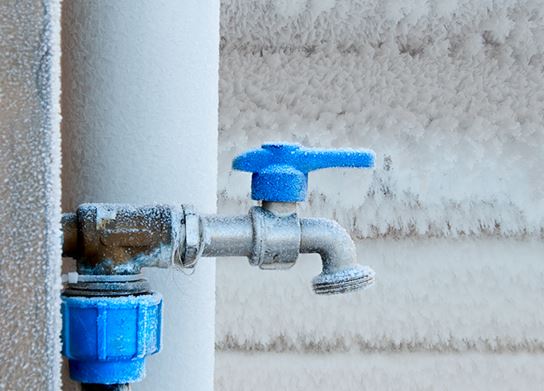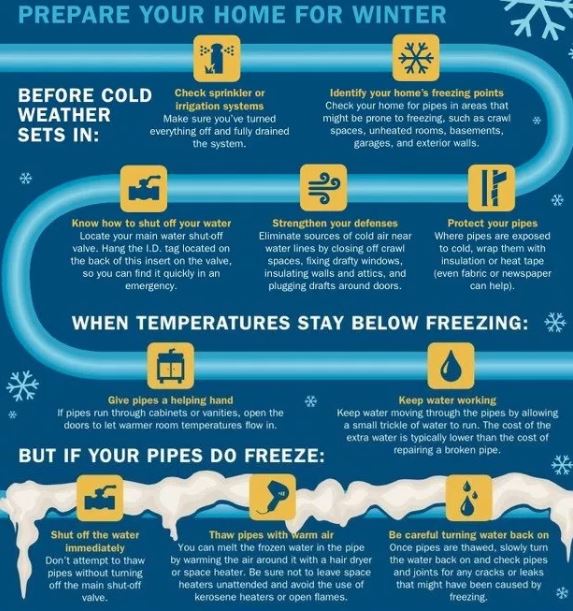With overnight lows predicted in the 20s and teens some nights this week, the Asheville Water Resources Department urges everyone to take precautions to protect their pipes from freezing.
In an emergency, however, the Water Resources Department is available 24/7. The City does not assist customers with indoor plumbing issues but can cut off the water source to help mitigate the situation if a break occurs. Should you need assistance, all the City’s Customer Service number at 828-251-1122.
Here are more tips from the Red Cross:
Why frozen pipes pose a problem
Water has a unique property in that it expands as it freezes. This expansion puts tremendous pressure on whatever is containing it, including metal or plastic pipes. No matter the strength of a container, expanding water can cause pipes to break.
Pipes that freeze most frequently are:
- Pipes that are exposed to severe cold, like outdoor hose bibs, swimming pool supply lines, and water sprinkler lines.
- Water supply pipes in unheated interior areas like basements and crawl spaces, attics, garages, or kitchen cabinets.
- Pipes that run against exterior walls that have little or no insulation.
How to protect pipes from freezing
Before the onset of cold weather, protect your pipes from freezing by following these recommendations:
- Check around the home for other areas where water supply lines are located in unheated areas. Look in the garage, and under kitchen and bathroom cabinets. Both hot and cold water pipes in these areas should be insulated.
- Consider installing specific products made to insulate water pipes like a “pipe sleeve” or installing UL-listed “heat tape,” “heat cable,” or similar materials on exposed water pipes. Newspaper can provide some degree of insulation and protection to exposed pipes – even ¼” of newspaper can provide significant protection in areas that usually do not have frequent or prolonged temperatures below freezing.
· Remove, drain, and store hoses used outdoors. - Add insulation to attics, basements and crawl spaces. Insulation will maintain higher temperatures in these areas.
How to prevent frozen pipes
- When the weather is very cold outside, let the cold water drip from the faucet served by exposed pipes. Running water through the pipe — even at a trickle — helps prevent pipes from freezing.
- Open kitchen and bathroom cabinet doors to allow warmer air to circulate around the plumbing. Be sure to move any harmful cleaners and household chemicals up out of the reach of children.
- Keep garage doors closed if there are water supply lines in the garage.
- If you will be going away during cold weather, leave the heat on in your home, set to a temperature no lower than 55°.
How to thaw frozen pipes
- If you turn on a faucet and only a trickle comes out, suspect a frozen pipe. Likely places for frozen pipes include against exterior walls or where your water service enters your home through the foundation.
- Keep the faucet open. As you treat the frozen pipe and the frozen area begins to melt, water will begin to flow through the frozen area. Running water through the pipe will help melt ice in the pipe.
- Apply heat to the section of pipe using an electric heating pad wrapped around the pipe, an electric hair dryer, a portable space heater (kept away from flammable materials), or by wrapping pipes with towels soaked in hot water. Do not use a blowtorch, kerosene or propane heater, charcoal stove, or other open flame device.
- Apply heat until full water pressure is restored. If you are unable to locate the frozen area, if the frozen area is not accessible, or if you can not thaw the pipe, call a licensed plumber.
- Check all other faucets in your home to find out if you have additional frozen pipes. If one pipe freezes, others may freeze, too.

